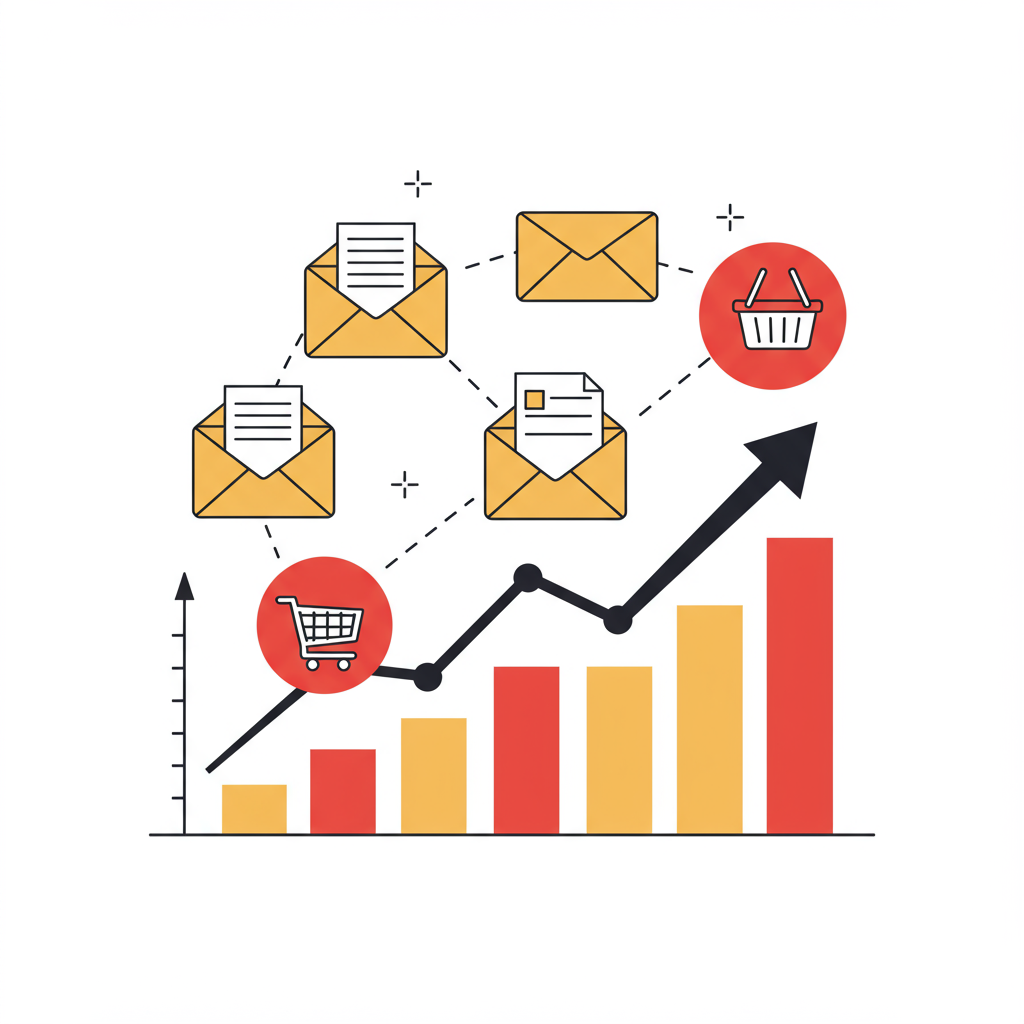Discover how to set up powerful email marketing automation flows for your Shopify store, from welcome series to abandoned cart recovery and post-purchase nurturing, ensuring consistent revenue and customer loyalty.
As a Shopify merchant, you’re constantly looking for ways to grow your business, save time, and build stronger relationships with your customers. One of the most effective, yet often underutilized, strategies is email marketing automation.
I’ve seen firsthand how a well-implemented automation strategy can transform a Shopify store, turning one-time buyers into loyal advocates and recovering lost sales without you lifting a finger.
Email automation isn’t just about sending a few emails; it’s about creating a personalized, always-on communication system that nurtures leads, drives repeat purchases, and builds brand affinity 24/7.
So, where do we begin? The first crucial step is choosing the right email marketing platform that integrates seamlessly with your Shopify store.
Shopify Email is a great starting point for beginners, offering basic automation directly within your Shopify admin. For more advanced segmentation and powerful flows, platforms like Klaviyo, Mailchimp, Omnisend, or ActiveCampaign are excellent choices.
My personal recommendation often leans towards Klaviyo for serious Shopify merchants due to its deep integration, robust segmentation capabilities, and e-commerce-specific features, though it does come with a steeper learning curve.
Once you’ve selected your platform, the next step is to integrate it with your Shopify store. This usually involves installing an app from the Shopify App Store or connecting via API keys.
This integration is vital because it allows your email platform to pull critical data from your Shopify store: customer purchase history, browsing behavior, abandoned carts, product views, and more. This data is the backbone of effective automation.
With your platform connected, it’s time to set up your core automation flows. These are the sequences of emails that trigger based on specific customer actions or inactions.
The Welcome Series is arguably the most important. For new subscribers who sign up for your newsletter, this series introduces your brand, shares your story, highlights bestsellers, and often includes a first-purchase discount.
A separate welcome series can be tailored for first-time customers immediately after their initial purchase. This thanks them, provides essential order information, and sets the stage for future engagement.
Next up is the Abandoned Cart Recovery flow. This is a non-negotiable for any Shopify store. When a customer adds items to their cart but doesn’t complete the purchase, this flow kicks in.
Typically, I recommend a series of 2-3 emails. The first, sent within an hour, is a gentle reminder. The second, 24 hours later, might address common objections or highlight product benefits.
The third, sent 48-72 hours later, could include a small incentive like free shipping or a discount to encourage conversion. Remember, these are high-intent customers; they just need a nudge.
Post-Purchase Follow-Up is crucial for building customer loyalty and encouraging repeat business. Don’t let the customer experience end at checkout.
An immediate ‘Thank You for Your Purchase’ email, beyond the standard order confirmation, can make a big difference. Use it to reinforce their decision and provide helpful information.
A few days after delivery, trigger a ‘Review Request’ email. Social proof is incredibly powerful, and customer reviews are gold for your product pages.
Consider a ‘Cross-Sell/Upsell’ email based on their purchase. If they bought a camera, suggest lenses or accessories. This leverages their recent purchase intent.
Win-Back Campaigns target customers who haven’t purchased from you in a while (e.g., 60, 90, or 120 days). Remind them of your value, showcase new products, or offer a special discount to re-engage them.
Browse Abandonment flows are more advanced but highly effective. If a customer views specific products multiple times but doesn’t add them to their cart, you can send a personalized email reminding them of those items.
Segmentation is key to making your automations powerful. Don’t send the same email to everyone. Segment your audience based on purchase history, engagement level, products viewed, location, and more.
Personalization goes hand-in-hand with segmentation. Use dynamic content to insert customer names, specific product recommendations, and order details. This makes emails feel tailored and relevant.
Always be testing! A/B test your subject lines, email copy, call-to-actions (CTAs), and even send times. Small optimizations can lead to significant improvements in open rates, click-through rates, and conversions.
Measuring success is vital. Track key metrics like open rates, click-through rates, conversion rates, and, most importantly, the revenue generated by each of your automation flows.
Focus on the return on investment (ROI) of your email efforts. Are your abandoned cart flows recovering enough sales to justify the setup? Are your welcome series converting new subscribers into customers?
Compliance is non-negotiable. Always ensure your email practices adhere to regulations like GDPR, CCPA, and CAN-SPAM. Provide clear opt-in and easy opt-out options.
Ensure your emails are mobile-friendly. The vast majority of people check their emails on their phones, so your designs must be responsive and look great on any device.
Every email in your automation flow should have a clear, compelling call-to-action. What do you want the reader to do next? Make it obvious and easy for them to take that step.
What are your biggest challenges with email marketing automation, or what’s one automation you’re excited to implement in your Shopify store?
Remember, email marketing automation isn’t a ‘set it and forget it’ task. It’s an ongoing process of monitoring, refining, and expanding your flows as your business evolves.
By diligently setting up and optimizing these automated email sequences, you’ll not only save countless hours but also build stronger customer relationships and drive consistent, passive sales for your Shopify store.






